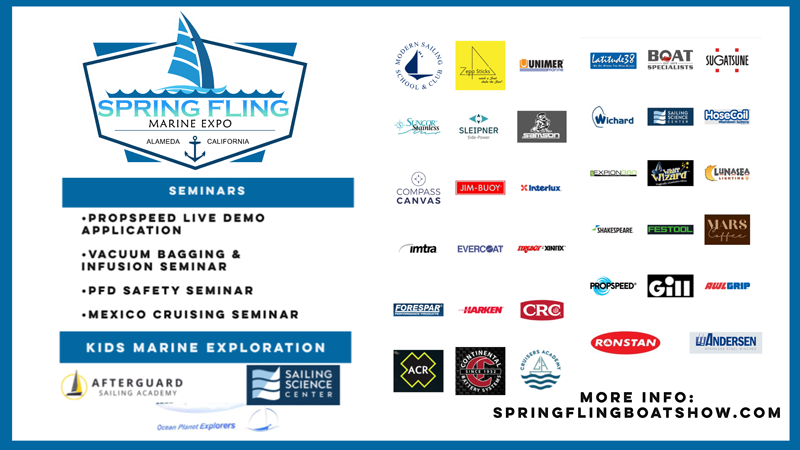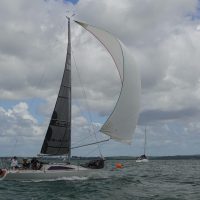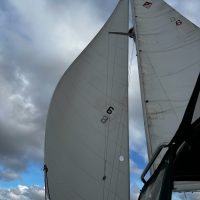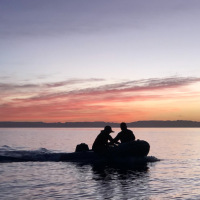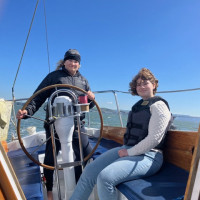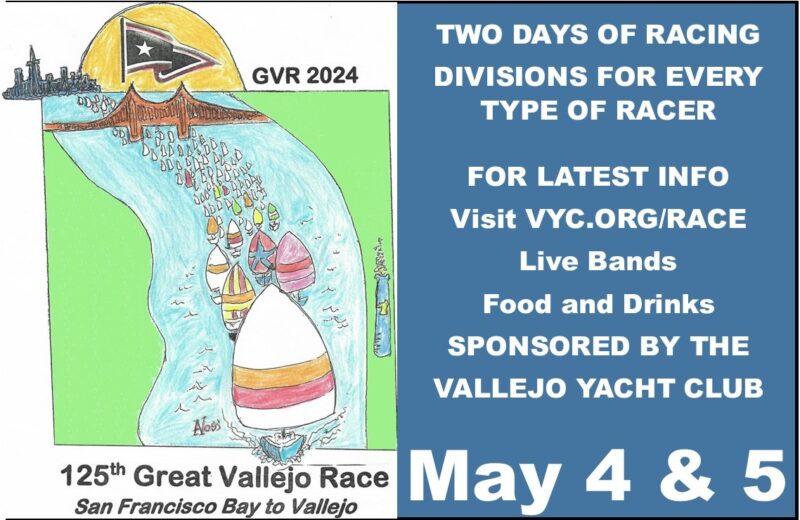
After Santa Cruz’s Mile Buoy Is Saved, Coast Guard Eyes Other Safe Water Buoys for Removal
Citing emerging navigation technology and the cost of maintenance, the United States Coast Guard is “evaluating the need for all Safe Water Buoys along the California coast.” Many of our readers have been aware of these plans, but the issue was thrust into the spotlight during the brief but passionate debate over the proposed removal of Santa Cruz’s Mile Buoy — an idea that was quickly rejected after mariners spoke out.
The proposed removals have been met with skepticism by a state boater advocacy group. In a letter to the Coast Guard, Recreational Boaters of California, or RBOC, “urgently requests that the Guard reconsider this planned mass removal of tangible aids to navigation. Literally every boater, sail racing group, and day sailor we’ve had the chance to consult so far, since your bulletin last month, thinks it’s a bad idea — if not actively dangerous.”
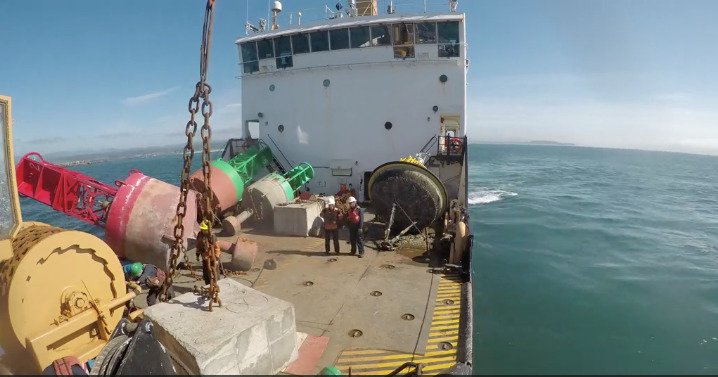
“The US Coast Guard will be removing the following Safe Water Buoys and will be replacing them with Virtual AIS (V-AIS) Aids to Navigation,” the CG said in a bulletin.
LLNR 455 – Noyo Approach Lighted Whistle Buoy NA
LLNR 2435 – Newport Harbor Entrance Lighted Bell Buoy NWP
LLNR 3010 – Long Beach Channel Approach Lighted Whistle Buoy LB
LLNR 3840 – Morro Bay Approach Lighted Whistle Buoy MB
LLNR 490 – Humboldt Bay Entrance Lighted Whistle Buoy HB
LLNR 10 – San Diego Bay Approach Lighted Whistle Buoy SD
“Separately, bells and gongs are being removed from some buoys,” the CG said. “The Coast Guard is permanently discontinuing the sound signal on the following Aids to Navigation:
Alameda Naval Air Station Channel Entrance Lighted Bell Buoy 1 (LLNR 4745)
Alcatraz Lighted Bell Buoy AZ (LLNR 4310)
Pillar Point Harbor Entrance Lighted Bell Buoy 3 (LLNR 4140)
San Francisco Main Ship Channel Lighted Bell Buoy 7 (LLNR 4190)
Pillar Point Harbor Entrance Lighted Gong Buoy 1 (LLNR 4130)
In an email to Latitude 38, the Coast Guard said that they’re taking into account (but are not limited to) the following factors when considering removing buoys:
- The Aid to Navigation’s effect on safe navigation
- Does it provide sufficient and timely information with which to safely navigate vessels within and through a waterway?
- Cost of maintaining aid
- Vessel traffic density and type
- Existing geographic composition
- Weather conditions
- Search and rescue historical data
- Frequency of discrepancies in the aid
- Ability for other means to provide equivalent value to mariners
- Environmental concerns
In their letter to the Coast Guard, the RBOC said, “A belief that all craft today have modern electronic-only navigational systems, and can always steer into port on GPS, would be naïve at best. Surely your own inspection data tells you that the recreational fleet is not all new, and is not all kitted out electronically as well as commercial craft.
“In California’s coastal waters, there’s often no absolute division between open-ocean waters, inlets, a small calm coastal bay, much larger bays with their own swells, and so on. Like it or not, we have lots of citizens and tourists running craft, even ill-fitted ones, inside and outside harbor entrances — and they’re not all going to have GPS or show up on AIS.”
RBOC president James Clark referenced a sea trial off Ventura a few years ago where a small cabin cruiser’s electronic harness partially failed. “What brought my wife and [me] safely back into harbor was our charted course plot, depth readings, and importantly, the Ventura Harbor whistle buoy, which we could hear [but] not see. It’s gratitude for our survival, not nostalgia, that moves me to suggest that you should not silence all the whistles and remove all the marker buoy lights in most of our recreational harbors statewide.”

Among their many duties, the Coast Guard is responsible for maintaining a nationwide network of maritime navigational aids. “These aids to navigation, or ATONs, include about 50,000 lighthouses, beacons and buoys marking more than 25,000 miles of navigable channels and 95,000 miles of shoreline in the United States and its territories,” the Department of Defense wrote in 2019. “Some of these aids are brand-new, while others — like the Alcatraz Light in San Francisco Bay — are more than 100 years old.”
Referring to the Safe Water Buoys, the CG said in the email to Latitude that, “The Coast Guard Aids to Navigation unit services these buoys tri-annually for regular maintenance (ranging from $30k-$600k/visit depending on location) and every seven years for complete replacement of the buoy ($110k – $1.3M/visit). [These are] rough estimates for 2024 costs; pricing for parts/fuel subject to increase with inflation. The units also conduct irregular servicing for discrepancy response (buoy off-station or the light extinguished, etc.) on as-needed basis.”
Maintaining ATONS and general marine transportation system management is yet another task heaped onto the Coast Guard’s punch list. In addition to rescuing mariners, the Coast Guard is also responsible for coastal defense and maritime law enforcement, homeland security, natural disaster response and drug enforcement on the high seas. (We’re probably missing a few.)
Depending on whom you ask, various administrations — on both the left and right — have hacked away at or snubbed the Coast Guard budget over the years. Regardless, we are clearly at a crossroads of technology, budgets and priorities.
Get on the Water for Earth Day With I Heart Oakland-Alameda Estuary
April 22 is Earth Day. The official website Earthday.org tells us the designated day is “a reminder of the importance of environmental conservation and sustainability” and serves as an invitation for people around the world to join together and take action for a healthier planet and brighter future. This year’s Earth Day theme is Planet vs. Plastics, and the I Heart Oakland-Alameda Estuary group is inviting us all to take part in their project for this year’s cleanup event on Saturday, April 20. In what’s presented as a “Grand Garbage-Go-Getting Adventure,” participants can walk and collect trash from the accessible shorelines, or launch a kayak or SUP to clean up the hard-to-reach Oakland Estuary beaches.
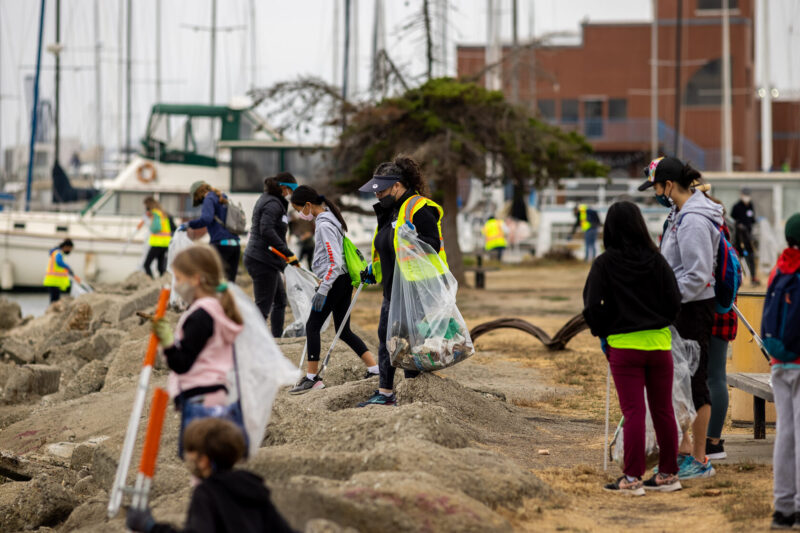
Mary Spicer of I Heart Oakland-Alameda Estuary says there’s a lot of debris from the February storms, and people are encouraged to connect with nature and protecting the planet by cleaning the waterways, all while “having FUN with your community.
“We call our events ‘Long Haul Cleanups.’ We go out for a long time and physically work hard so that we clear up to 3,000 lbs of garbage from the shores,” Mary says.
Put your name down for the Earth Day, Walk, Kayak & SUP here: Oakland Earth Day
When: Saturday April 20. 10 a.m.–1:15 p.m.
Meet at: Jack London Aquatic Center, 115 Embarcadero Oakland, CA 94607.
If you have questions you can get in touch via text: (510) 283-4224 or email: [email protected].
For kayak reservations call California Canoe & Kayak: (510) 893-7833.
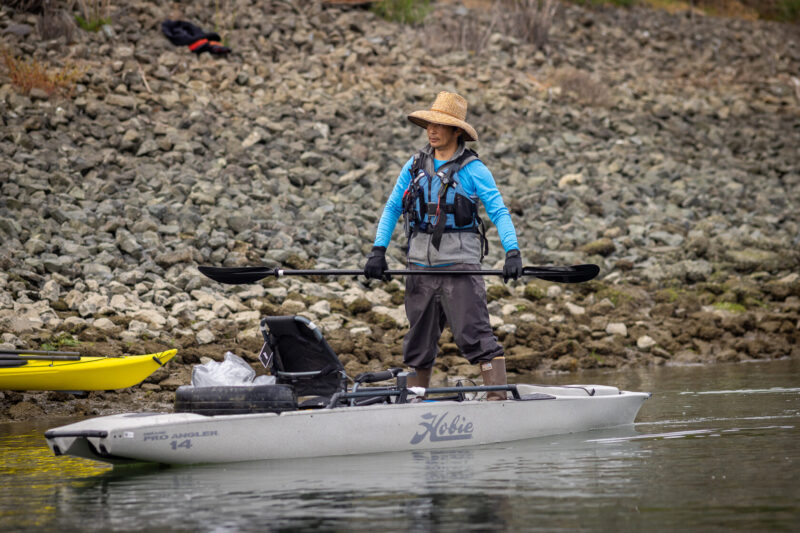
Mary included a link to an interview with Marine Mammal Center research biologist Bill Keener, who works in the center’s Cetacean Conservation Biology program. Keener talks about the country’s last whaling station, a submerged net under the Golden Gate Bridge, gray whales visiting the the East Bay’s shallow verges in 2023, and how dolphins are conscious breathers. Tune in here.
When we really put thought into this idea of coming together for a healthier planet, we recognize that ultimately we’re trying to save ourselves. We need our planet and its diverse natural ecosystems to survive. So why wouldn’t we want to take care of it?
Protect Nature 🐟 🧤 Stop the Debris Flow
Mark Your Calendar for Svendsen’s Spring Fling April 12/13!
Get your tickets today! More info at www.springflingboatshow.com.
- Environmental News
- Circumnavigators
- Working Waterfront
- General Sailing
- Racing
- Current News
- Pacific Puddle Jump
Incomplete Coverage: A Partial Eclipse of Sailing News
We have one of the sunniest days of anywhere in the US, but that will only get us a look at about 33% of the solar eclipse here in Northern California. while San Diego will get about 54% coverage. However, a 33% eclipse on a clear day may be more more fun than a 100% eclipse elsewhere on a cloudy day.
Who Won the Bullship Race? More Importantly, Who Came in Second?
Saturday’s sunny Bullship Race had a fleet of 21 El Toros racing from Sausalito to San Francisco. First place was Richmond Yacht Club member Chris Sullivan aboard his El Toro Moon Age Daydream. But like great circumnavigation races and the basketball final four, it’s often the person who comes in second that makes the story. Cole Brauer did a spectacular job coming in second in the Solo Global Challenge, Caitlin Clark had an amazing college career with Iowa, finishing second in this year’s college women’s championship, and Vaughn Seifers aboard Out on a Lim shocked the world taking second in this year’s Bullship Regatta. It was Rowena Carson sailing Warf taking third. Richmond Yacht Club made a clean sweep of the top three spots. Complete results are here.
Congress and Your Logo Design Will Help Save the Sausalito Working Waterfront
The Sausalito Working Waterfront is a busy place. The recent newsletter highlighted the haulouts of the schooner Freda B and the 90-ft motoryacht Wanda. They also are having a design contest to create a logo for all the tenants of the Marinship, so they can share their community’s story to preserve the working waterfront.
In addition, Congress has recognized the threat to working waterfronts nationwide. There are two bills introduced to help prevent working waterfronts from turning into condo developments so sailors, fishermen and the maritime trades have places to maintain and service boats on the coast. You can read more about these stories and enter the contest by reading more in the Sausalito Working Waterfront Newsletter here.
Company Offers Alternative Source for Time — Why?
GPS makes sure Door Dash can deliver the burritos to your house or help you miss a rock or find a narrow pass on an atoll. According to an article in the New York Times the space-weapons race is putting the GPS system at risk. The Chinese have kept developing Loran as an alternative, and other systems exist, but right now, there does not appear to be a good Plan B for the US GPS system. The critical element in this is keeping time. The story mentions the company Satelles, which is working with the US National Institute of Standards and Technology to use different satellites for an alternative source of time. Something we’d all like to find. In the meantime, the Navy and Door Dash are both teaching their team to relearn the use of sextants.
Translated 9 Retires From Ocean Globe Race With Hull Cracks
The Swan 65 Translated 9, the current IRC leader of Leg 4, has been forced to divert to Portugal after a heavy broach in 50-knot gusts slammed them down, reopening previously repaired cracks in their hull around the rudder skeg, causing water ingress. In Leg 3 they had to return to Auckland to repair similar cracks that developed after heavy weather. At present they are approximately 1000 miles SW of Portugal and making for land, with an ETA of 11 April. You can follow the fleet as they close on the finish off the Isle of Wight, England.
Darkness Crosses the Pacific Puddle Jump Fleet as it Heads West
This is the season for boats to head from the west coast of the Americas to the fabled islands of the South Pacific. About 15 boats from this year’s fleet of Pacific Puddle Jumpers are now underway. The Tayana 52 Current Toy, which left from Puerto Vallarta in early February, has already arrived to start enjoying life under the swaying palms. Jan Passion wrote in a week ago to say “bon voyage” from the X Yachts 49 Joia as they left Southern California on a course south and west. The rest of the fleet could have an interesting day with their sextant (if they have one), since many will be sailing right across the path of totality in today’s eclipse. You can see the fleet progress here.
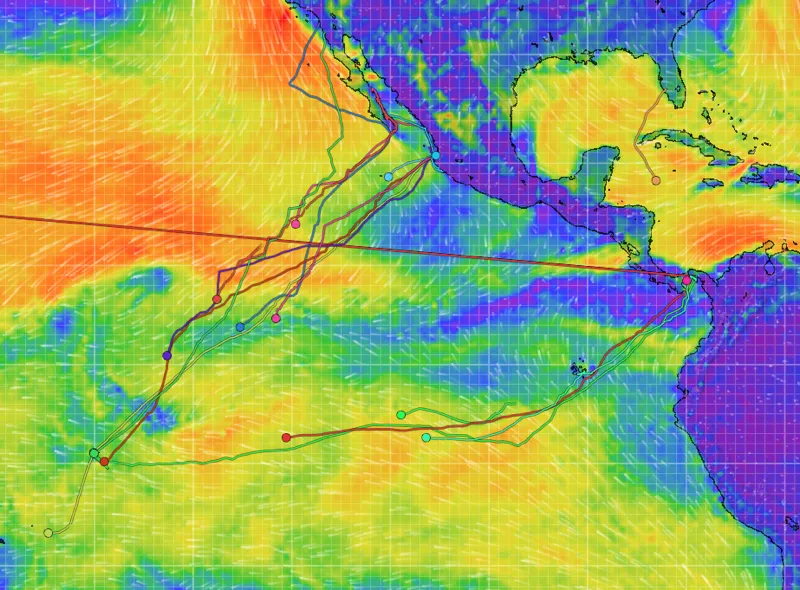
The Art of Crew Life — Hitching Rides Wherever the Wind Blows
Bay Area sailor Yosh Han is a USCG 25T captain and member of Fairwind Yacht Club and Women’s Sailing Association. She’s doublehanded to Hawaii, raced in the Transpac, and sailed from Tahiti to Tonga and Grenada to South Carolina. This month, she’ll be sailing to the Marquesas aboard Joia, an X-Yacht X 49. In Latitude’s April issue, Yosh shares some of her story about sailing — on other people’s boats.
Since I started sailing in 2018, I have sailed almost 15,000 miles, mostly by crewing for others. In 2016, I was a guest on a kitesurfing catamaran in Micronesia when I first learned about “hitchhiking by boat.” At the time, I was not a sailor, but was fascinated by the concept of hitching rides. A year later, I messaged the catamaran’s captain and asked if there might be an opportunity to join them as crew. As luck would have it, they were preparing to cross from Papua New Guinea to Palau. I booked a one-way ticket to Kavieng. On that equator crossing, I threw a gold ring into the ocean for my shellback ceremony and promised myself to Poseidon, God of the Sea. From that moment forward, my life changed forever. I was hooked!
In spring 2018, I took a sailing course in Baja California. Afterward, I made a crew profile on Latitude 38, Find a Crew, and Go Sailing. I got an email in October 2019 from Myron and Marina Eisenzimmer of the Swan 44 Mykonos — they had seen my profile on the Latitude 38 Crew List. They had a couple from a previous trip crewing, but one of them had to bail at the last minute, so there was an open spot. Did I want to join them? Heck yeah!
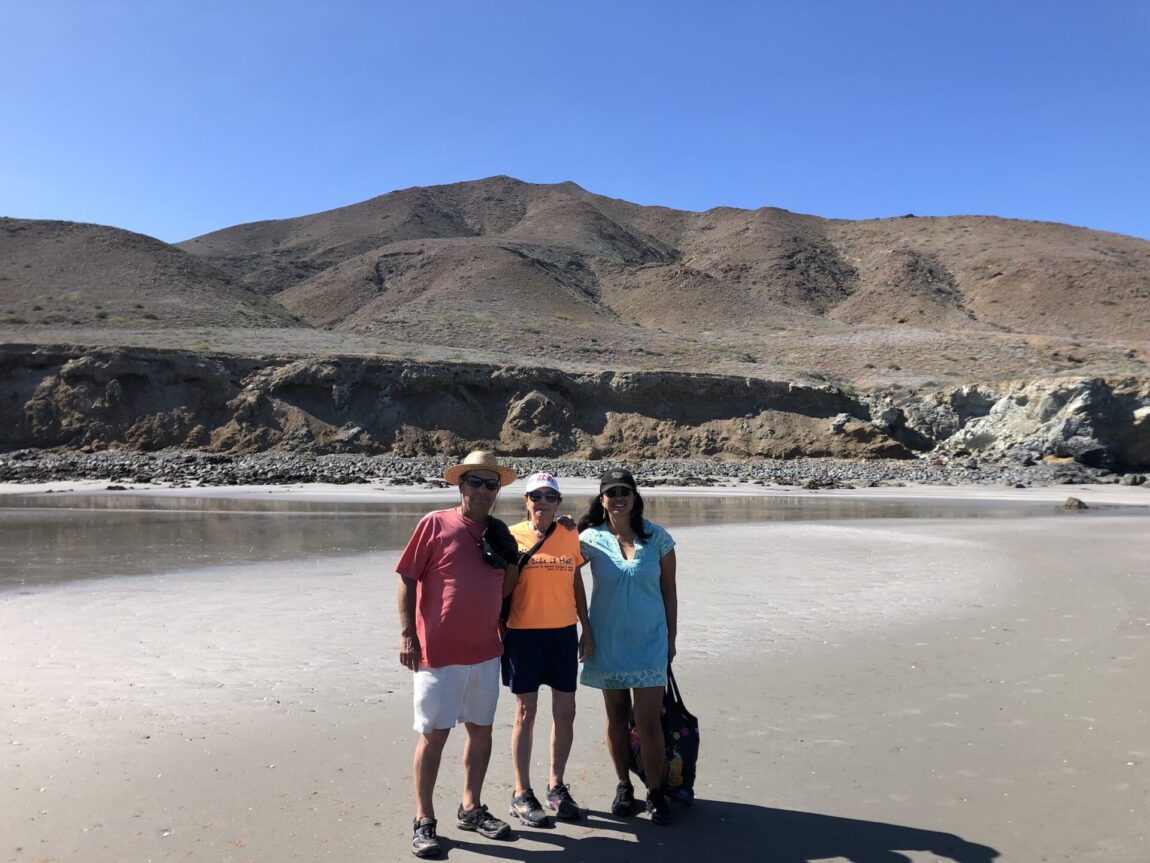
On almost every boat I’ve been on, the boat becomes smaller even if you all like one another. Some people pitch in for boat chores and others act like a guest, even if they’ve signed on as crew. While I didn’t become besties with my crewmates on that trip, I learned that some boats had it much worse.
In 2021, Myron invited me to go on the Baja Ha-Ha again. In June, he asked me to help with crew selection. We developed a set of questions for interviewees. Their answers, especially “How do you handle confrontation?” helped me assess each person’s temperament.
Here are some sample questions: “Do you have a valid passport? Can you cover your transportation costs? Are you OK if we are delayed a few days?
“Are you willing to sleep in the main salon? Are you OK with showering only at anchor? Will you help clean up the galley after meals? Are you OK with three-hour shifts starting after dinner? Will you participate in events like the baseball game?
“Have you set an asymmetrical spinnaker or doused with a sock? Can you lift a 70-pound life raft if required? Can you set a whisker pole?
“How do you handle confrontation? At what critical point would you wake the owner from sleeping?”
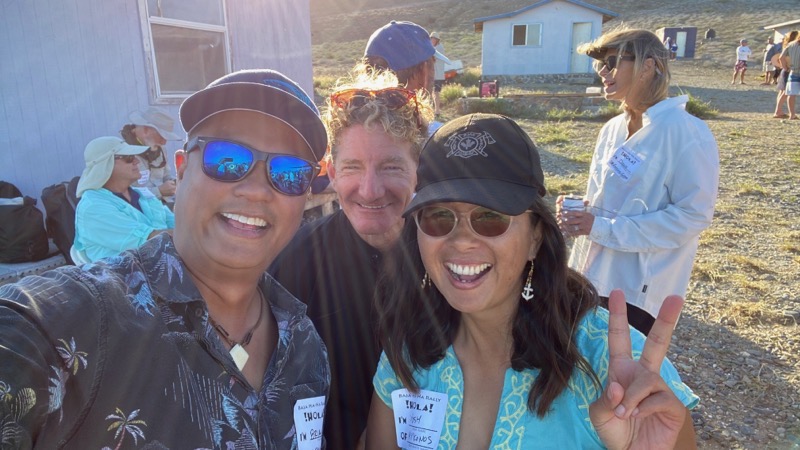
One by one, I made appointments to speak with five candidates. The first person I spoke with was Karen Miller, who responded immediately. We had a great conversation. The second person was energetic, but had only 10 days of vacation time. You always need a weather window on either side — it might take 11 or 12 days — so she was out. One interviewee seemed introverted and wasn’t sure if she’d want to attend the beach parties or baseball game, even though those are what make the Baja Ha-Ha unique! The next person was a delight, but had concerns about privacy. Seeing as how she’d be sleeping in the salon, sorry, no privacy at all!
I was feeling a little nervous about the candidates. The last person on my list was challenging because she was in Mexico, didn’t have a SIM card or Wi-Fi access, and demanded to know why we were conducting interviews in June for an October trip. She made it seem like an inconvenience, and a privilege for us to sail with her.
I realized the second time I spoke with Karen that she was the only person who made me laugh. I had a good feeling that she would get along with us, and I gave Myron my recommendation. We invited Karen to sail with us. Our trip down was fantastic. Not only was Karen a perfect crewmate, she’s become sailing family. Karen and her partner Jim did the bash back at the end of the season and joined Myron and Marina for the Ha-Ha in 2023. Aboard Mykonos, I have bashed from San Diego to San Francisco, Cabo San Lucas to Puerto Vallarta and separately, Cabo to Barra Navidad. We will travel from Barra to Mazatlán at the end of February. Pro Tip: Ask questions. The interview goes both ways.
When I first learned to sail, I was creeped out if a captain asked if I wanted to “see his engine.” (I wasn’t sure if it was code for wanting some hanky panky.) Knowing what I know now, if someone doesn’t want to show me the engine, I get nervous. An owner with integrity takes pride in boat maintenance. You really do get a sense of things by seeing the engine.
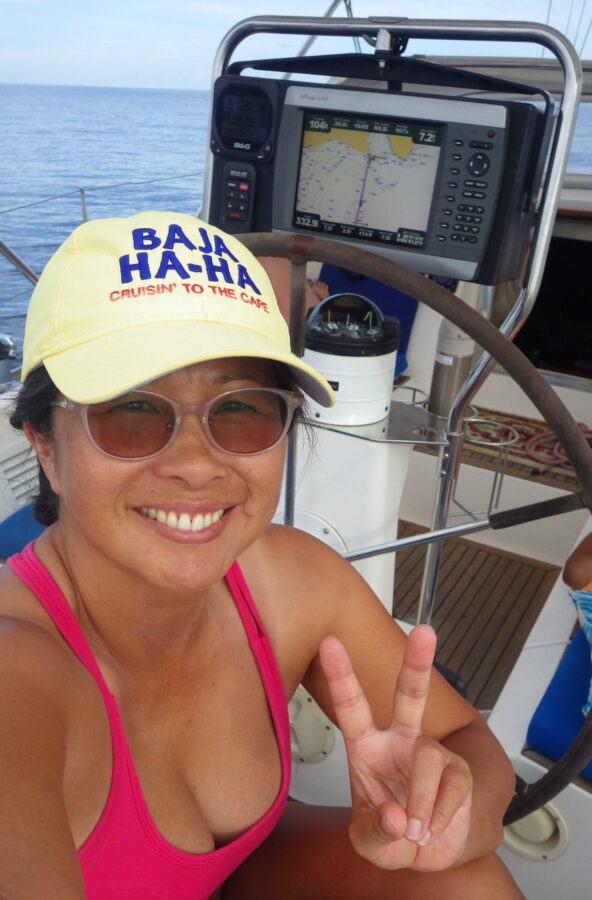
The above article appears in April’s Sightings. Head to Latitude 38/April issue to read more short stories from the magazine, such as “The Proudfoots’ Project, Part 2” (Part 1 here) and more.
You can support Latitude 38’s commitment to West Coast sailors and sailing news when you click here.
Sailagram: A Snapshot of March Sailing
Spring has sprung, along with our clocks and our docklines. Sailors have been making the most of the warmer, sunny weather and enjoying the spring breezes on the Bay. Here are the photos to prove it! Are yours among them? If not, you know what to do …
Head over to the Sailagram page and upload your photos for next month’s gallery.
Don’t Miss the 125th Great Vallejo Race
The Great Vallejo Race is just around the corner? Are you signed up yet? Sign up today: www.vyc.org/the-great-vallejo-race.

